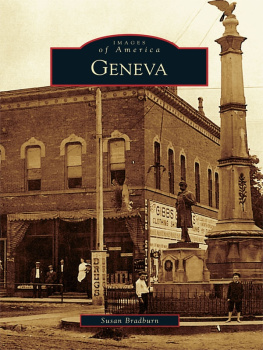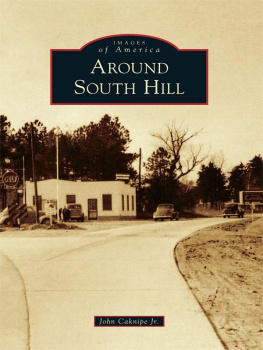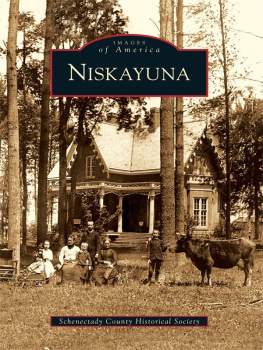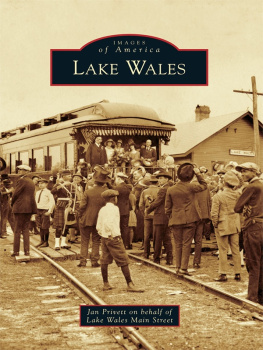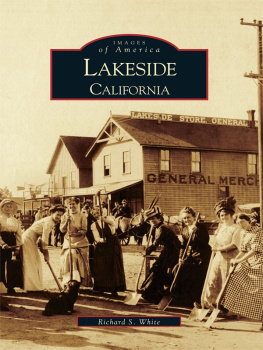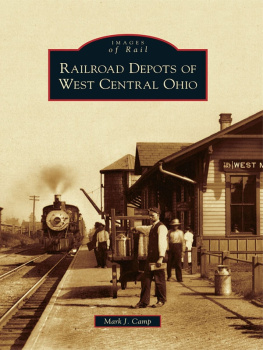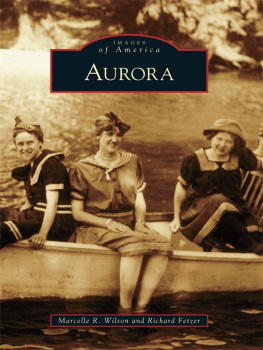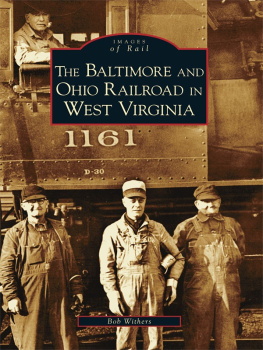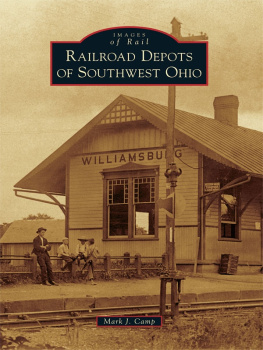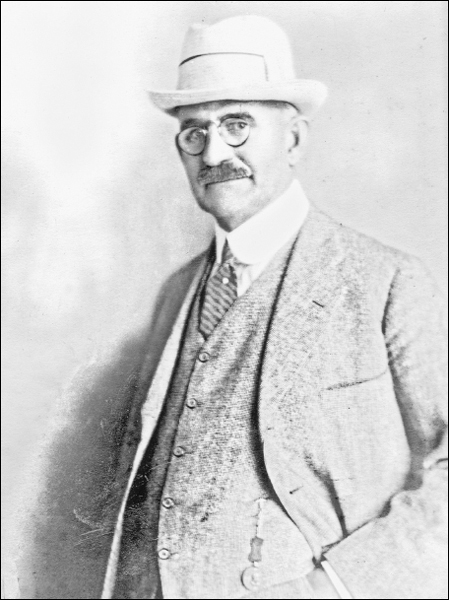George Eugene Sebring (18591927) was the founder of Sebring, Florida. Together with his son and partner H. Orvel Sebring, they watched the young town grow into a model planned community and winter oasis for northern residents. The elder Sebring never held local office and was seldom heard to speak in public; his vision and works instead became his enviable legacy. (Courtesy Sebring Historical Society.)
ON THE COVER: Participants in the July 4, 1926, Sebring Fire Department Miss Flame beauty pageant are shown on the departments newest truck, purchased that year. Among the participants were Lois Starbuck and Virginia Woods, third and fourth from left. The truck appears to be in the municipal pier parking lot, approximately where todays public library is located, with the Masonic Temple (1921) visible in the distance. (Courtesy Sebring Historical Society.)
Copyright 2008 by Susan Priest MacDonald, Randall M. MacDonald, and the Sebring
Lovingly dedicated to the memory of Thomas Mitchell Priest and to Betty Jo Priest, for whom Sebring holds treasured memories; and to Lillian Grace Marsh Thro, our niece.
ACKNOWLEDGMENTS
The conclusion of The Fifty Years of Sebring, 19121962 summarizes a challenge to historians: All histories share two characteristics: they omit far more than they tell, and they are unending. Our purpose in these pages is to provide a glimpse of life in early Sebring. To the extent we have succeeded, we owe a great deal to the generosity of others.
This project would not have materialized without the steadfast assistance and guidance of Sebring Historical Society archivist Carole Goad. Her wide-ranging knowledge of Sebrings people, places, and events is impressive, and her friendship and affable spirit are greatly appreciated. Volunteers Jackie Koza, Gary Harnage, and Elizabeth Walker provided helpful assistance in our research, and it has been a pleasure to work on this project with the Sebring Historical Society.
The invaluable assistance of Allen C. Altvater III deserves special recognition. Allen has done much to preserve the history of Sebring by updating and publishing works his grandfather Allen C. Altvater authored. For allowing us to reproduce photographs from the Allen C. Altvater Collection and for help identifying Sebring sites, we extend our gratitude. Others who provided assistance include Marie Williams Daniels, David Klatt, Sarah E. MacDonald, Betty Jo Priest, Thelma Pyle, Mike Sawyer, and Mandy Sheets. Arcadia Publishing has been wonderful to work with, from our initial conversations with Ingrid Powell, to the cheerful guidance of Kate Crawford and Lauren Bobier.
Special appreciation goes to Patricia Mays Hollenberg, a treasured friend for 37 years, and to Constance Marsh MacDonald and Malcolm M. MacDonald.
This project has been of intense personal interest. Susan Priest MacDonald is a proud 1976 graduate of Sebring High School, living in Sebring from 1969 until 1978, and her family remained in town until 2004. At the time of their marriage, she and Randall M. MacDonald learned that his grandmother Ruth Newcomb Greene MacDonald vacationed in Sebring as a young woman, visiting Kenilworth Lodge to golf. Sebring holds a special place for us, just as it does for so many others, and we look forward to seeing what comes next as the history of Sebring continues.
INTRODUCTION
In 1911, no modern roads led to Lake Jackson, south of Avon Park, Florida, and few families had settled in this raw wilderness known for bountiful fishing and game some 30 miles from the nearest railroad depot in Wauchula. Yet entrepreneur George E. Sebring was drawn to this locale and saw in its beauty the promise of a new town. Sebring had done this before; as one of four brothers in the pottery manufacturing business, he had helped found Sebring, Ohio, in 1898 as a planned industrial community in support of the family businesses, and eventually, it became known as the Pottery Capital of the World. Sebring traveled extensively and, by 1909, was spending winters in Daytona Beach. His interests turned to citrus production, and he envisaged another Sebring that would attract new residents to the largely unsettled south central Florida peninsula.
Sebring purchased some 9,000 acres on the shore of Lake Jackson from Wauchula realtor A. G. Smith, and his new townknown for a brief period as Lakeview Parkwas designed and surveyed between October 1911 and April 1912 by A. C. Nydeggar of Winter Haven and Lakelands J. W. Turner. Turner is credited with determining the final position of the Circle, which fast became the center of the community, joined by three roads in six places: Center Avenue, Commerce Avenue, and Ridgewood Drive. George E. Sebrings partner in this new venture was his eldest son, H. Orvel Sebring. Together they applied years of business acumen and connections throughout the Midwest to attract new landowners, businesses, and other makings of a new community. By 1912, they formed two companies to develop and promote the town: the Sebring Development Company and the Sebring Real Estate Company, with the goal of establishing a self-sustaining community in short order. These efforts were successful; as potential landowners arrived, they liked what they saw, bought land, and helped to nurture Sebring. What of George E. Sebrings interest in citrus? According to local practice, every new dwelling had a citrus tree in the yard, and coincidentally, the entire region became known as a center of citrus production.
By virtue of its location along the Atlantic Coast Line Railroad line, establishment of Sebring as county seat of Highlands County a year after it was formed in 1921, and with amplified growth of central Floridas Ridge area, Sebring emerged as a novel tourist and golfing destination. The best-known hotels were Kenilworth Lodge (1916), Tropical Hotel (1922), the Nan-Ces-O-Wee Hotel (1923), and Harder Hall (1927), and guests enjoyed the recreational activities sponsored by the Sebring Tourist Club. A point-by-point description of Sebring appeared in The Sebring White Way as the Harder Hall project was underway, providing a snapshot of the developing city. Printed as one long column, the description reads as follows:
Sebring has: Pep. A Band. One dairy. Two banks. Ten hotels. Whiteways. Ice factory. Six doctors. Six garages. Two railways. Confectionary. Masonic lodge. Cabinet works. Eight attorneys. Taxicab service. One paint store. 5 and 10 store. One music store. Oddfellows lodge. Baseball grounds. Two lumber mills. One kindergarten. Two barber shops. One jewelry store. Transfer company. Two electric shops. Ten filling stations. Knights of Pythias. Boat & Canoe club. Five grocery stores. Eastern Star lodge. Realtor associations. Two civil engineers. Seven eating places. Two millinery shops. Ornamental Nursery. High school athletics. Two hardware stores. Two furniture stores. Western Union office. Three packing houses. Nine contracting firms. Municipal golf course. Four dry goods stores. American Legion Post. Three plumbing shops. High school orchestra. About 4,500 fine folks. Chamber of Commerce. Accredited high school. Good daily newspaper. Moving picture theatre. Parks and playgrounds. A fertilizer warehouse. Womans Club building. Five insurance agencies. Two model beauty shops. One cement block factory. Automobile fire apparatus. Two photographic studios. Spanish War Veterans Post. Three dry cleaning houses. Parent-Teachers association. One pool and billiard parlor. Two ladies furnishing shops. Wholesale and retail bakery. Seven church denominations. Two mens furnishing shops. A number of citrus nurseries. Painting and decorating firms. Two gasoline and oil agencies. Thirty-four miles asphalt streets. Two railway commercial agencies. American Railway Express Company. Rows of orange trees over mile long. Boulevard around lake, 10 miles long. Municipal Golf course and club house. Numerous apartment and boarding houses. Telephone service with 700 subscribers. Local baseball club and basketball club. Two large grove caretaking companies. Rolling hills and many fresh water lakes. Numerous real estate offices or firms. Light and power plant. Sparkling clear water free from mineral taint. Four million-dollar developments. One 30 million dollar development.


